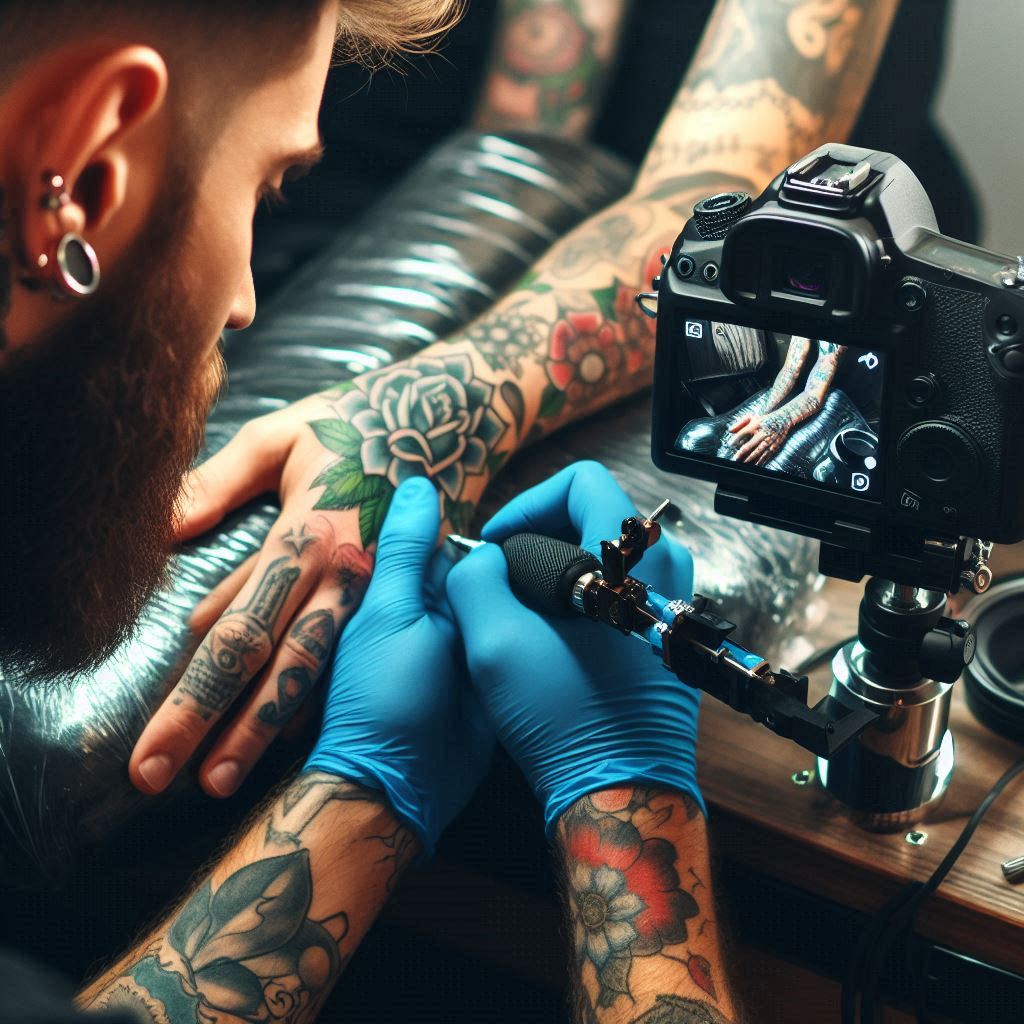How Can Studying Art Forms Outside Tattooing Help?
Why should tattoo artists study traditional and digital art forms?
Even as tattooing is its own discipline art form, external sources can energize inner creativity and finesse. A look at fine art, illustration, graffiti,
digital painting, or even sculpture allows you a window to greater variety of expression. Every one of these medium will instruct you in something different—whether in terms of shape, color mix, movement, contrast, or mood.
Tattooers such as Salvador Dalí and Jean-Michel Basquiat have an impact on tattooers today, not due to the use of ink on flesh, but because their voice was distinctive. Likewise, through exposure to external disciplines, you learn methods and aesthetics that you can translate into your own.
How may these studies affect your needlework?
Practicing calligraphy can result in neater linework. Practicing digital art can open up color pairings you never thought of before. Even knowing comic book shading or oil painting depth can alter how you draw a portrait on skin. Cross-pollinating techniques between art forms makes more possible when the needle meets skin.
How Does Practicing on Paper or Digital Devices Help Your Style Evolve?
Why is drawing still crucial in contemporary tattooing?
There is always a sketch before there’s a tattoo. Drawing hones your creative brain and enhances your technical ability. It lets you mess around with composition, proportion, shading, and detailing without the fear of permanence. On paper or on Procreate, drawing is where your imagination is set free.
Even if you are old-school in ink, taking time to draw keeps you sharp. It allows your designs room to develop before they are put on a client’s skin. In addition, as your designs change on paper, your tattoos change in style.
How often should tattoo artists draw to develop their signature style?
Dedicate at least 30 minutes daily to drawing, even if it’s just thumbnail concepts or quick sketches. Eventually, patterns will develop—certain shapes, subjects, or flows that repeat. These unconscious decisions start building your signature. Maintaining a sketchbook or digital repository assists in monitoring your development and provides you with an abundance of material to refer to or flash out.
Why Should You Strategically Select and Study Tattoo Genres?
What genres do you want a tattoo artist to specialize in at the beginning?
Tattooing encompasses a lot of genres—traditional, neo-traditional, realism, tribal, geometric, fine-line, and so on. Rather than being a jack of all trades, begin with the genres you resonate with most. Specializing in a few genres makes for a stronger brand and allows you to gain a following quicker.
Observe artists you look up to. What kind of genre do they work in? How have they progressed? Learning from their path can lead you to a more defined path of your own.
How does working with fewer genres make you stand out?
Sticking to a few favorite genres makes your portfolio cohesive and allows your work to speak for itself without ambiguity. Potential clients surfing through your work will find an evident theme, allowing them to be confident in your professionalism in that arena. With a solid foundation established, you can naturally grow into hybrid forms.
What Is the Role of Feedback in Discovering Your Style?
How can constructive criticism inform your development as an artist?
Growth stems from criticism—particularly the criticism that hurts a little. Soliciting criticism from other tattoo artists, mentors, or even customers can give you new perspectives that you might overlook otherwise. Criticism uncovers blind spots and emphasizes your strengths.
Tattooing isn’t merely a matter of pleasing yourself; it’s about others’ experiences of your work. Hearing other views helps you perfect both your skill and style.
Where do tattoo artists go for real feedback?
Participate in communities such as Reddit’s r/tattoos or Discord communities related to your industry. Visit conventions and participate in competitions. Request critiques from mentors or coworkers. Even online critique sessions with YouTube artists or live streams can be a treasure trove of information. The key is to ask for criticism from people you admire—and be willing to hear it.
